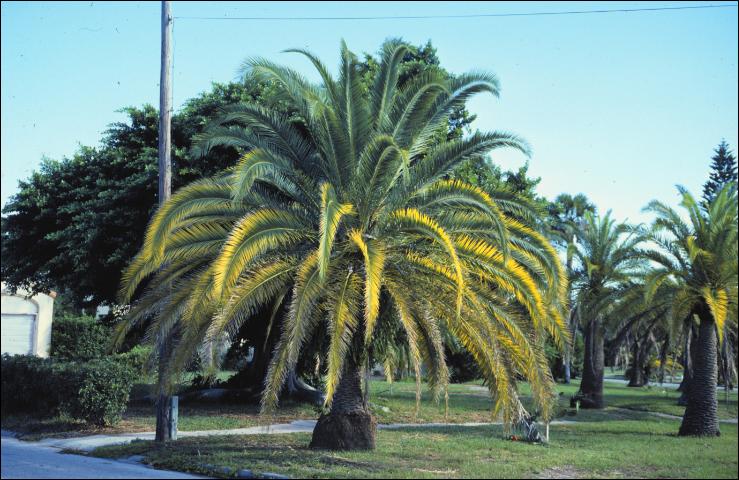
by Julie McConnell | Dec 2, 2014
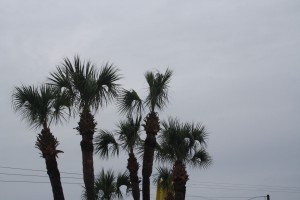
Over-pruning. Photo credit: JB McConnell, UF/IFAS
Many people picture sugar sand beaches, emerald green water, and gorgeous palm trees swaying in the breeze when they think about visiting or moving to Florida. The panhandle offers the beautiful Gulf of Mexico and sugar sand beaches, but sometimes its palms look a bit deficient. Why is that and what will it take to correct this? Although it seems counter-intuitive, major improvements can result from providing less attention to the palms by reducing the amount of pruning.
Over pruning palms leads to nutrient deficiencies and increases the likelihood of insect and disease problems. Pictured at left is an example of over pruned palms. This technique leaves the heads looking spindly and unattractive, and also hurts the palm’s short-term and long-term health. So, why do property owners send someone up a ladder to harm their palms? Most likely a combination of misinformation and routine.
Palms should have a 360 degree canopy, for example if the top of your palm tree is a clock (with hands, not digital!) you would not prune any fronds above 3 and 9 o’clock. The palms pictured above are pruned in a range from 11-1 o’clock and 10-2 o’clock.
Why does it matter how many fronds are on the palm?
- First off, palms are not trees as many people believe, but instead are grasses. Palms have just one growing point that is located at the top of the trunk, and this one bud called the apical meristem is busy making fronds that will not appear until several months from now.
- When nutrients are not available in the soil it can take 4-6 months for a deficiency to show up, so palm nutrition is tricky. Although they grow differently than trees and shrubs, one commonality is that they produce food through photosynthesis and need all available green tissue to make this happen.
- When there are fewer fronds, the palm has limited resources to create energy.
Native Florida soils are not able to meet the specific nutrition needs of most palms, so it is common to see nutrient deficiencies. Some nutrients such as nitrogen, potassium, and magnesium are mobile in the plant. This means that they can be moved to areas with sufficient amounts of the nutrient to other parts of the palm that do not have enough. This will cause some partial discoloration in leaves, which can be misinterpreted as a dying leaf when in reality it is just sharing food with the rest of the palm. If that frond has any green tissue remaining and is cut off, then a great source of nutrients has just been removed thus making the overall deficiency even worse!
What about “hurricane-cut” to improve wind resistance?
- Another common myth is that making a “hurricane cut” will reduce the likelihood of trees breaking in storms. Observations after the hurricane seasons of 2004 and 2005 along with research by scientists have shown that the opposite is actually true. Trees that had been given a “hurricane-cut” were more likely to have their crowns snapped than palms with full crowns.
- Damaged or dead fronds should be removed before storms to prevent them from becoming airborne during a storm, but green leaves should remain on palms.
So, how do you know the difference between normal shedding of fronds and a deficiency?
- Normal shedding (senescence) is indicated by an overall discoloration of the whole frond, not just sections, and the whole process of turning color and falling off (or hanging down depending on the palm) only takes a couple of days.
- A gradual shift to yellowing, browning, abnormal growth or other similar symptoms are typically nutrition related.
Above are some examples of common nutrient deficiencies found in Florida landscapes. These are examples of leaves that are still supporting the palm and should be left attached to the tree until the whole frond is brown.
For more information on proper pruning and nutrient deficiencies of palms, please see the publications indicated below.
Nutrient Deficiencies of Landscape and Field-Grown Palms in Florida
Pruning Palms
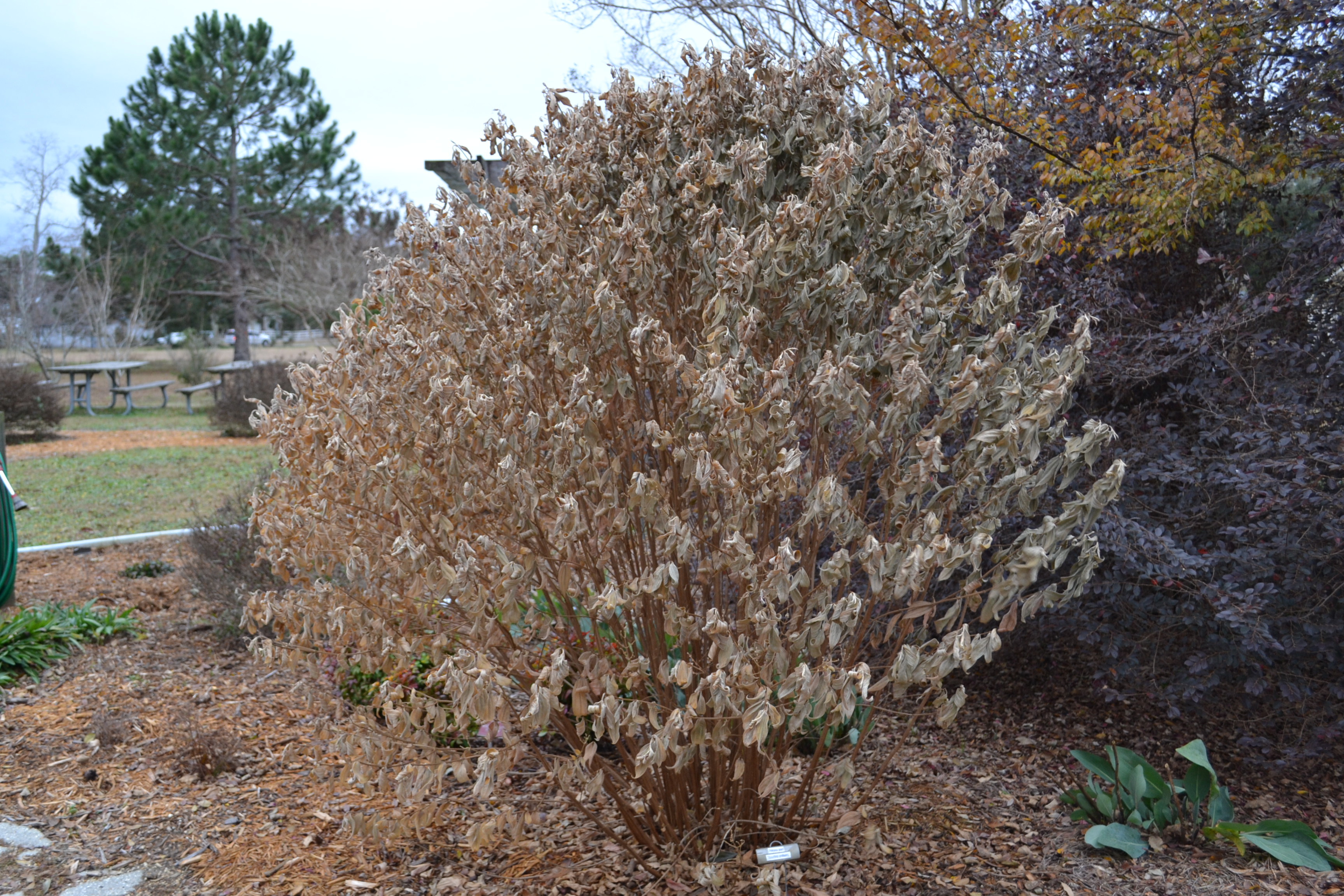
by Beth Bolles | Dec 2, 2014
Our recent cold weather was not only a surprise for many locals but also for many plants that still had plenty of green growth. After a couple of nights of freezing temperatures, even deciduous trees that had not dropped their leaves, look a little ratty.
Since it is just the beginning of December and we are likely to have many more days this winter with cold weather, now is not the time to react to plants that were damaged. There are a few exceptions of plants that you can prune back, but in general patience is the key for the winter garden and cold-damaged plants.
Here are a few guidelines.
Unless planted in very protected spots, annuals like coleus and angelonia were killed by recent cold air. You may remove these plants or cut them back close to the group to make garden areas look neater. You may want to add some new winter annuals to brighten up these spots.
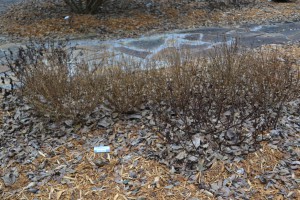
Warm season annuals can be removed from the garden.
Both young and mature citrus trees experienced injury since many plants still had tender growth. Do not prune out any damage at this time. We will wait until next Spring to learn where the growth will resume and then prune as necessary to remove dead branches.
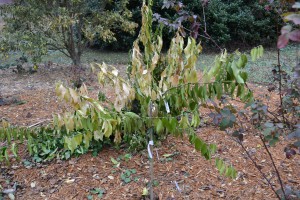
The tender growth on a young Meyer lemon was damaged by cold air.
As expected, the above ground portions of flowering perennials were severely injured by cold air. It is best not to prune these back now since the layer of branches and foliage may help insulate lower branches that could still have some life. If you are not able to tolerate the look of cold-damaged perennials in your garden, consider only pruning half of the plant just to make a neater appearance in the garden. When warm weather returns next year, we may be surprised to see growth resume on lower stems.
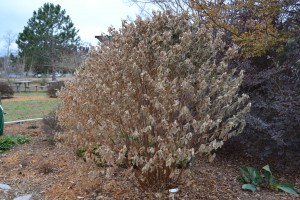
Many flowering perennials like Tibouchina will return from the ground next year.
Deciduous trees that would have normally dropped leaves before the cold have full canopies of dead leaves. Trees will eventually drop these leaves aided by winter winds and rainfall.
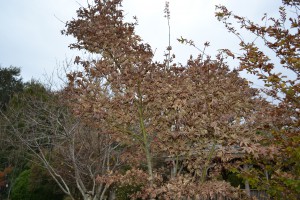
This Japanese maple will eventually drop it’s cold-damaged leaves and offer attractive bark and structure in the winter garden.
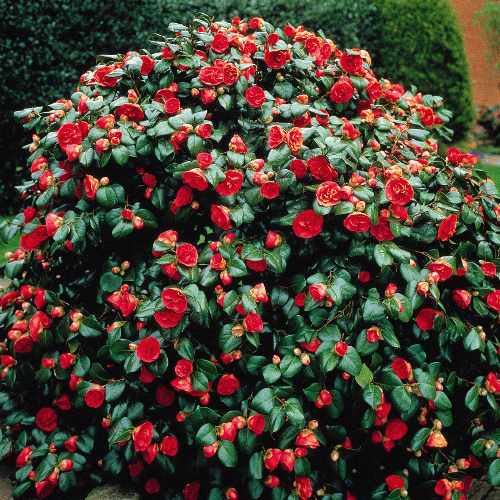
by Sheila Dunning | Dec 2, 2014
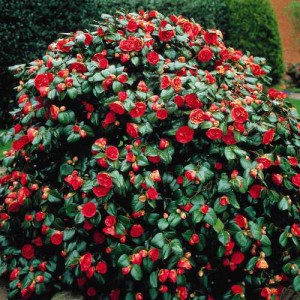 Camellias have been a part of the landscape in the Southeastern United States for over 200 years. They are native to Asia and were introduced near Charleston, South Carolina in 1786. The common name camellia refers to varieties and hybrids of Camellia japonica and to lesser known varieties of C. sasanqua and C. reticulata. The growing conditions in Northwest Florida are well suited for many camellia varieties. Camellias can serve several functions in the landscape including foundation plantings, screens, accent plants, background groupings and hedges. Maximum benefit can be achieved by mass plantings or groupings. Single plants should be focal point in beds rather than randomly placed throughout the lawn. Camellias flower in the fall and winter when their display of colorful blooms is most appreciated. During the remainder of the year their evergreen foliage, interesting shapes and textures, and relatively slow growth make camellias excellent landscape plants. Some camellia growers enjoy competing in flower shows and manipulate the flower buds to achieve larger and earlier flowers. This involves removing competing flower buds and applying gibberellic acid (a plant hormone). Individual cultivars can be selected for size and form ranging from small and irregular to large and upright. Texture and foliage color also differ among the various species and multiple varieties. Mid-season flowering varieties that bloom from November through January are best suited for Florida conditions.
Camellias have been a part of the landscape in the Southeastern United States for over 200 years. They are native to Asia and were introduced near Charleston, South Carolina in 1786. The common name camellia refers to varieties and hybrids of Camellia japonica and to lesser known varieties of C. sasanqua and C. reticulata. The growing conditions in Northwest Florida are well suited for many camellia varieties. Camellias can serve several functions in the landscape including foundation plantings, screens, accent plants, background groupings and hedges. Maximum benefit can be achieved by mass plantings or groupings. Single plants should be focal point in beds rather than randomly placed throughout the lawn. Camellias flower in the fall and winter when their display of colorful blooms is most appreciated. During the remainder of the year their evergreen foliage, interesting shapes and textures, and relatively slow growth make camellias excellent landscape plants. Some camellia growers enjoy competing in flower shows and manipulate the flower buds to achieve larger and earlier flowers. This involves removing competing flower buds and applying gibberellic acid (a plant hormone). Individual cultivars can be selected for size and form ranging from small and irregular to large and upright. Texture and foliage color also differ among the various species and multiple varieties. Mid-season flowering varieties that bloom from November through January are best suited for Florida conditions.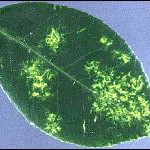
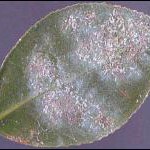 Warm fall temperatures may prevent early varieties from flowering properly. Late-blooming selections may attempt to send out new leaves before the end of the flowering period which results in “bullnoses”. Bullnosing is characterized by poor quality flowers which do not open fully and may even drop while still tight buds. Extended dry periods while in the bud stage can make the condition more likely. While flowering, camellias need 1 inch of water applied each week. Camellias perform best in partially shaded locations which are enhanced by good drainage and air movement. Fertile, acidic soils high in organic matter are preferred. The soil must be well-drained because camellias will not grow in wet areas. Do not plant them in areas with a high water table and/or hard-pan. This will result in a shallow root system which is more susceptible to injury during dry periods. Camellias should be installed where cold air can move in and out freely, but the area should be protected from strong northwest winds. Plantings under established trees or in areas that has structures to block the wind are usually injured less by cold temperatures. These conditions enable the plants to gradually thaw or warm in the morning before being exposed to direct sunlight. Dense shade may result in sparse foliage and poor flowering. Camellias exposed to full sun may appear yellow-green, but may yield more flowers. Either situation is stressful to the plants and can lead to pest problems. Tea scale is the most common insect on camellias. Scales generally feed on the underside of leaves and may not be noticed until large populations have developed. Symptoms include very small elongated white and/or brown raised “flakes” on the underside of leaves that turn yellowish in color. Tea scale can be controlled with horticultural oil, sprayed after flowering finishes but while temperatures are sill cool, in late winter.
Warm fall temperatures may prevent early varieties from flowering properly. Late-blooming selections may attempt to send out new leaves before the end of the flowering period which results in “bullnoses”. Bullnosing is characterized by poor quality flowers which do not open fully and may even drop while still tight buds. Extended dry periods while in the bud stage can make the condition more likely. While flowering, camellias need 1 inch of water applied each week. Camellias perform best in partially shaded locations which are enhanced by good drainage and air movement. Fertile, acidic soils high in organic matter are preferred. The soil must be well-drained because camellias will not grow in wet areas. Do not plant them in areas with a high water table and/or hard-pan. This will result in a shallow root system which is more susceptible to injury during dry periods. Camellias should be installed where cold air can move in and out freely, but the area should be protected from strong northwest winds. Plantings under established trees or in areas that has structures to block the wind are usually injured less by cold temperatures. These conditions enable the plants to gradually thaw or warm in the morning before being exposed to direct sunlight. Dense shade may result in sparse foliage and poor flowering. Camellias exposed to full sun may appear yellow-green, but may yield more flowers. Either situation is stressful to the plants and can lead to pest problems. Tea scale is the most common insect on camellias. Scales generally feed on the underside of leaves and may not be noticed until large populations have developed. Symptoms include very small elongated white and/or brown raised “flakes” on the underside of leaves that turn yellowish in color. Tea scale can be controlled with horticultural oil, sprayed after flowering finishes but while temperatures are sill cool, in late winter.











